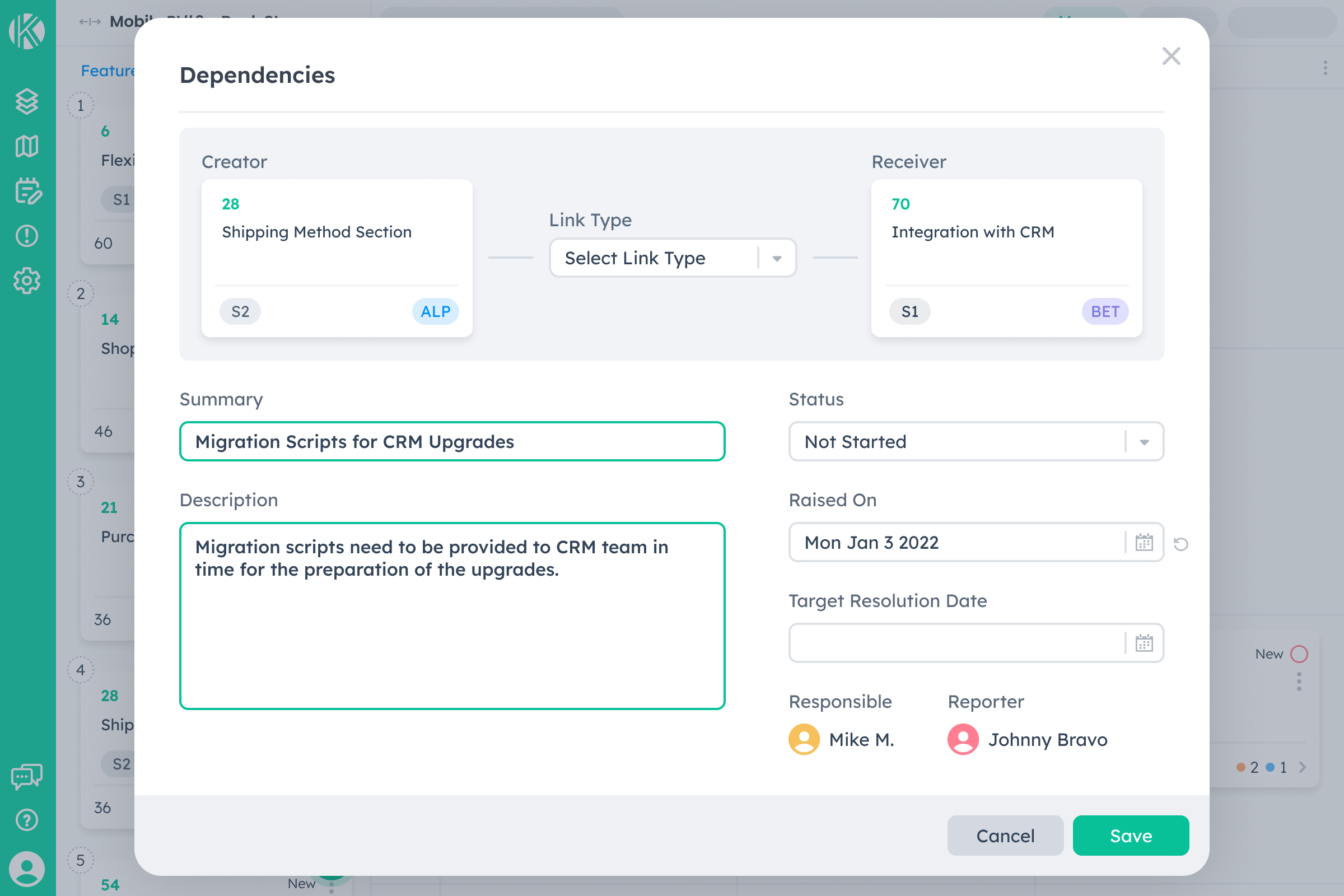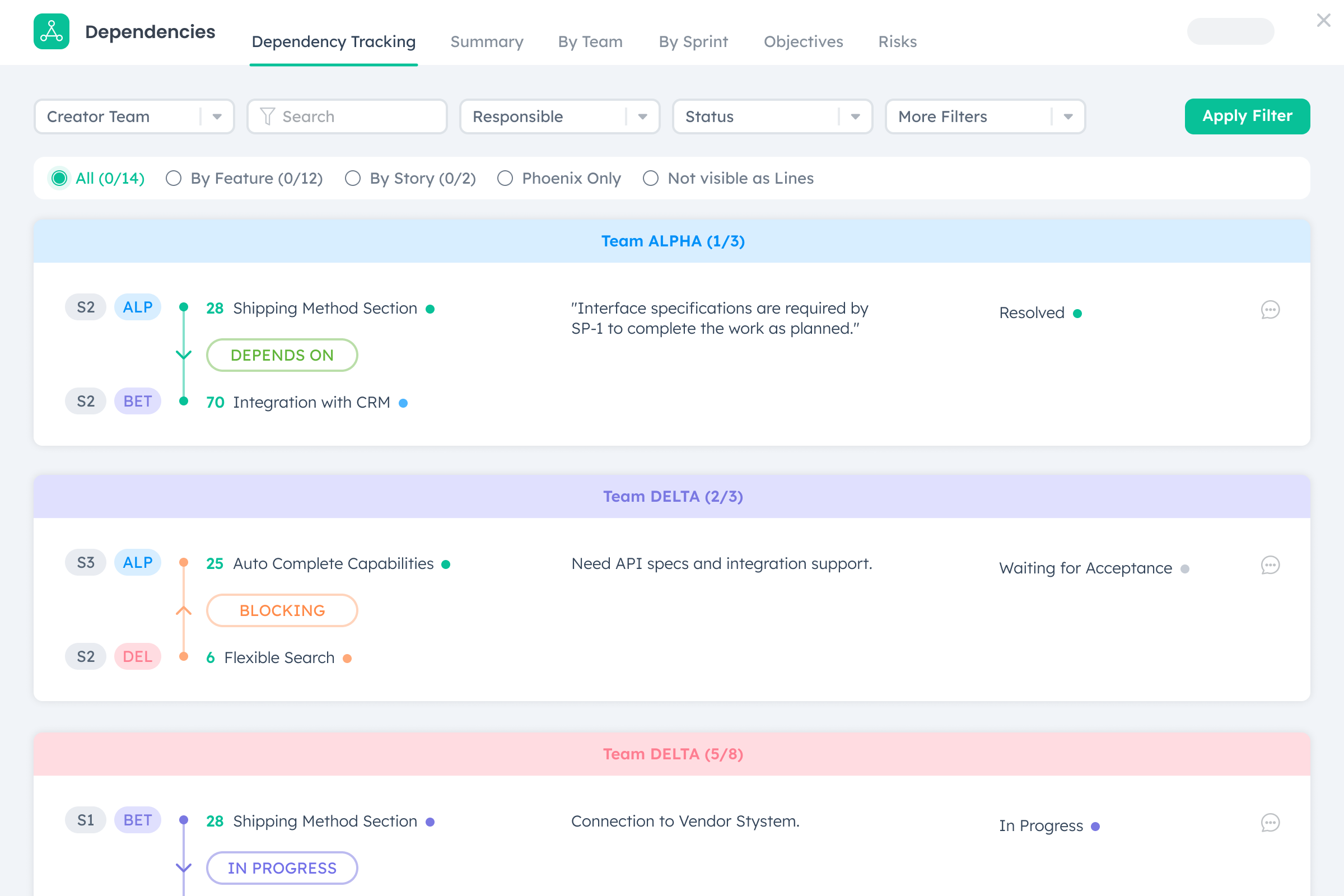During the Program Increment (PI) Planning, one of the most important activities is being able to understand, discuss and possibly mitigate inter-team dependencies. If not identified, these unknown dependencies would impact delivery of important features anticipated or requested from the business. Thereby, blocking your teams from achieving their goals.
During the Big Room Planning, there is an increased focus on teams to come up with a reliable plan which can stretch over several iterations or sprints. This usually results in very insightful discussions and helps recognize 10’s, sometimes 100’s of dependencies.
After the conclusion of the planning, when the teams return to their sprints, the challenge of tracking these dependencies and engaging the right team members emerges.
In this article, we will discuss the best practices for dependency management and the solution for optimal and transparent dependency management.
Best Practices for Dependencies Management During PI Planning
The following aspects can really help you focus on managing your dependencies.
- Setting Resolution Dates for the Dependencies – Setting dates to dependencies will let management stay focused on the dependencies, allow for prioritization, and alleviate expectations. Once a date has been provided, the team can be set responsible for its resolution.
- Set an Individual Responsible from the Teams Who Will Own the Dependency – When everyone is responsible, no one is responsible. Having a name of a single person responsible for the dependency will make it easier to have one point of contact rather than involving an entire team.
- Ensure the Right People are Added as “Watchers” to the Dependency – There may be people in different positions or roles that need to be informed on the progress of the dependency. Add them as watchers to allow so that they can receive automatic updates.
- Keep the Spotlight on Dependencies in Program Ceremonies – Ask your Scrum Masters to check the open dependencies for the current sprint and discuss in your Scrum of Scrums.
What is the Solution for Managing Dependencies?
Kendis is designed to help the Project Managers, Release Train Engineers (RTE), Business Owners, Scrum Masters, Program Roles, and other relevant team members to track captured dependencies more efficiently. Kendis empowers you with 3 unique capabilities for managing your dependencies effortlessly.
Visualizing Dependencies
Dependencies can be created between features and the team’s user stories. The dependencies are created with a simple drag and drop and then visualized as lines on the Kendis board. Dependencies can also be created with items brought from your configured JIRA or Azure Devops Projects.

Tracking Dependencies
The dependency lines can have 5 different colors. Each color depicts a different scenario for your dependency thus it will help you to quickly identify the situation visually on your board.
- Blue: Dependency Links created between items that are brought from JIRA or Azure DevOps Project
- Grey: Dependencies are just created and are on track
- Red: Dependencies that have missed their target iteration/sprint or resolution date
- Yellow: When the feature or user story that is a Receiver for a Dependency, gets their sprint changed
- Turquoise: When the target resolution date for dependency has passed or when the date for a feature or user story has passed
For efficiently tracking your dependencies in Kendis, you will also be able to do following:
- Setting “Resolution Dates” for resolving the dependencies
- Select and set users in your organization as “Responsible” for being the owner of the dependency
- Select and set users as “Watchers” that will not be accountable for the resolution of the dependency but would be informed about the progress and status of it

Filtering and Sorting Dependencies

With a huge amount of data, it’s often cumbersome to narrow down the contents that we need to focus on. To help with such a scenario, there are extensive filtering options available in the dependencies list view in Kendis. You will be able to:
- Use the sorting options in the list view and see the dependencies that have their deadlines coming up.
- Sort options to view dependencies by team
- Sort options to view by Iterations/Sprints
- Sort options to view by Target Resolution Dates
- Search dependencies by their item ID or title
- Filter the dependencies that are in status “Waiting for Acceptance” by the team that needs to plan the work to mitigate your dependencies.
Takeaways
When it comes to having transparency, the more the better. It becomes a crucial demand when PI Planning is done with remote teams.
Kendis realizes this need for transparency and thus provides you with a solution for managing your dependencies with absolute simplicity that will immensely relieve you of all your issues regarding dependency management.
Attaining a transparent view of the progress of your work results in having a very positive impact on the overall productivity of your teams. It empowers the team as it lets them develop a sense of belonging and purpose towards achieving the organizational goals.









